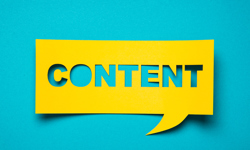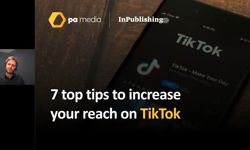
Could I ask you a very personal question? How are your pay differentials? Is the gap between your top executives and your content creators widening? If so, there’s trouble ahead.
Do read Steve Dyson’s excellent interview with the National Union of Journalists’ Chris Morley. It’s hard to disagree with the points he makes.
Chris’ basic premise is that (some) publishers are underpaying their journalists and overpaying their top executives. Too many journalists, Chris tells Steve, are seeing static pay and increased workloads, at a time when bosses are “pocketing huge bonuses”.
Underpaying is never a good thing, but it’s especially harmful at a time of industry transition where business models are being turned upside down and where the very survival of many well-known titles is seriously in doubt.
Working people to the bone is not a recipe for long term success. It might help maintain, or even increase, profit margins in the short term, but will eventually lead to ruin. It’s not hard to see why. Overworked journalists do not produce content that’s worth paying for.
The best journalism is produced not by people working in chain-gangs, subbing endless fluff-filled press releases, but by people given time to look up, to breathe, to hone their articles, to nurture leads and stories, to work their patch.
In our rush to cut costs, it’s all too easy to persuade ourselves that black is white and two plus two equals five. The simple truth is that readers will not buy our content (in print or online) if it’s not interesting, if it’s not relevant, if it lacks authenticity, or credibility, or … if it’s just a wee bit rubbish. This is not hard to understand. Look at what content you subscribe to yourself; I’m sure you’re very discerning in what you spend your money on.
Creating content worth paying for is not the same as producing widgets, a mechanical process where efficient automation and tight quality control over highly predictive and repetitive processes will reduce costs, improve quality and boost profits. A virtuous circle.
Content, alas, is not like that; yes, there are efficiencies that can be made and repetitive manual processes that can be streamlined (see Tim Robinson’s article on newspaper design) and that’s to be applauded. But the challenge for senior management lies in being able to tell the difference between freeing up time to enable your journalists to produce better content and freeing up time so as to increase their workload and / or reduce headcount. It’s a fine line.
And finally, we’re proud to be the media partner of two forthcoming events – WAN-IFRA’s Digital Media Europe in Copenhagen on 10-11 April and the PPA Festival at Tobacco Dock in London on 10 May. We’ll be sending copies of this issue and also the Publishing Partners Guide to each event, and Martin and myself will be attending the PPA event; maybe see you there.
As always, thank you to our advertisers, in the magazine, the newsletter and on our website. Please call them.












